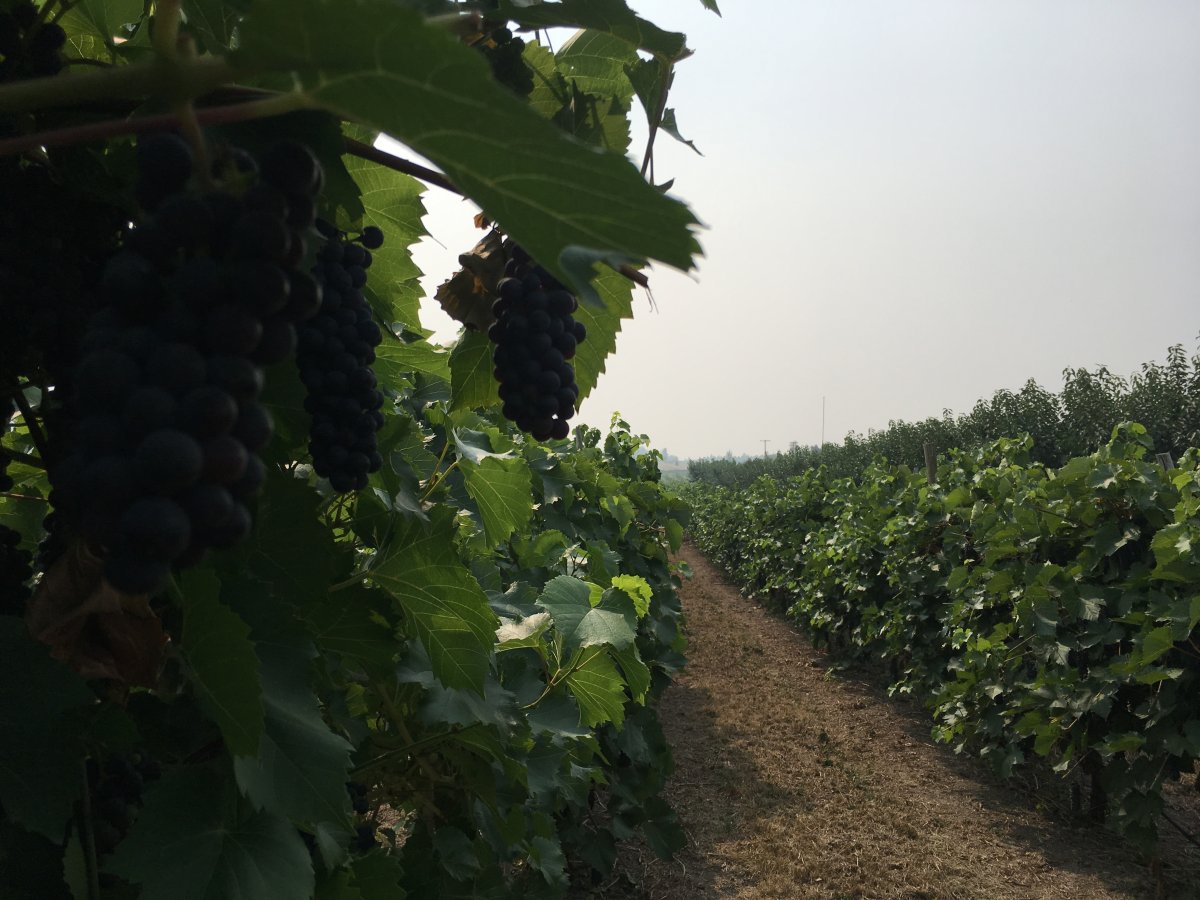With wildfires now a part of life in British Columbia, university researchers are studying how wildfire smoke impacts the province’s wine industry.

Depending on the year, and the intensity of wildfire season, B.C.’s wines can be affected by something called smoke taint, an unpleasant byproduct of heavy smoke that can settle over a region for days or weeks at a time.
The wildfire smoke can seep into ripening grapes, with affected wines tasting smoky, ashy, burnt or like medicine. According to the Australian Wine Research Institute (AWRI), “consumers have been shown to respond negatively to smoke-tainted wines.”
Enter researchers at the University of British Columbia Okanagan (UBCO), who are using chemical markers to predict smoke taint.
Wesley Zandberg, an associate professor of chemistry, was part of a study published last summer in a journal called Molecules. Nine other agencies also took part in the study, including the AWRI, the University of Adelaide and Kelowna-based Supra Research and Development.
“Many may have noticed how the aroma of wood smoke, say, from a campfire, permeates clothing or hair, or how smoking a salmon imparts a delightful aroma to the meat. Smoke does not taint wines in the same way,” wrote Zandberg.
“Wine grapes readily absorb the compounds responsible for smoky aromas, but once inside the grape, they are almost immediately transformed by enzymes into forms that cannot be perceived by smell or taste. The problem is, the yeasts used for wine fermentation are able to regenerate the original smoky aromas.”

According to UBCO, the teams studied 10 Okanagan wines produced in 2018, which was a serious fire season.
“All wines were perceptibly influenced by smoke exposure,” said UBCO. “Three wines were on the market but identified as ‘smoke affected’ and seven were never marketed because of the high levels of smoke taint detected after fermentation.”
Those tainted wines, plus wines deliberately fortified with smoke-aroma chemicals, were sent to nine commercial and research labs around the world for testing.
UBCO says the nine labs and very similar and accurate results. However, the university noted there were lower accuracies for items called volatile phenols, and particularly so for an item called a free cresol.
One website defines cresols as a widely occurring and natural organic compound with a coal/tar-like odour characteristic.

“Not only were the laboratories less accurate in identifying these free cresols,” said UBCO, “but the calculated concentrations of these free cresols in the tainted wines varied significantly between each lab.”
Notably, though, Zandberg said it’s important to understand that just because chemical markers from smoke taint can be measured or tasted, “that doesn’t mean you have a tainted product.”
“That’s why it’s important to distinguish between smoke-tainted and smoke-affected wine. Just because smoke can be perceived doesn’t mean necessarily the wine is tainted, since this can be subjective.”

Further, Zandberg says some wine consumers may like the taste or smell of smoke in their drink, but added that if a smoky taste is beyond what most would enjoy, the wine is smoke tainted.
The study also noted that some volatile phenols naturally occur at high levels in some species of grapes like shiraz, which is associated with a peppery taste.
Zandberg also said an important part of the study done by the University of Adelaide was determining what experts could taste and smell. Those tests included smoke-tainted Okanagan wines along with untainted Australian wines.
“This kind of research is valuable because it can provide more accurate and more regionally relevant risk assessment tools,” said Zandberg.
“It can importantly help wine producers connect chemical measurements to the taste and smell of their product, and that leads to improved ways to potentially mitigate this problem and reduce smoke taint in Okanagan wines.”





Comments